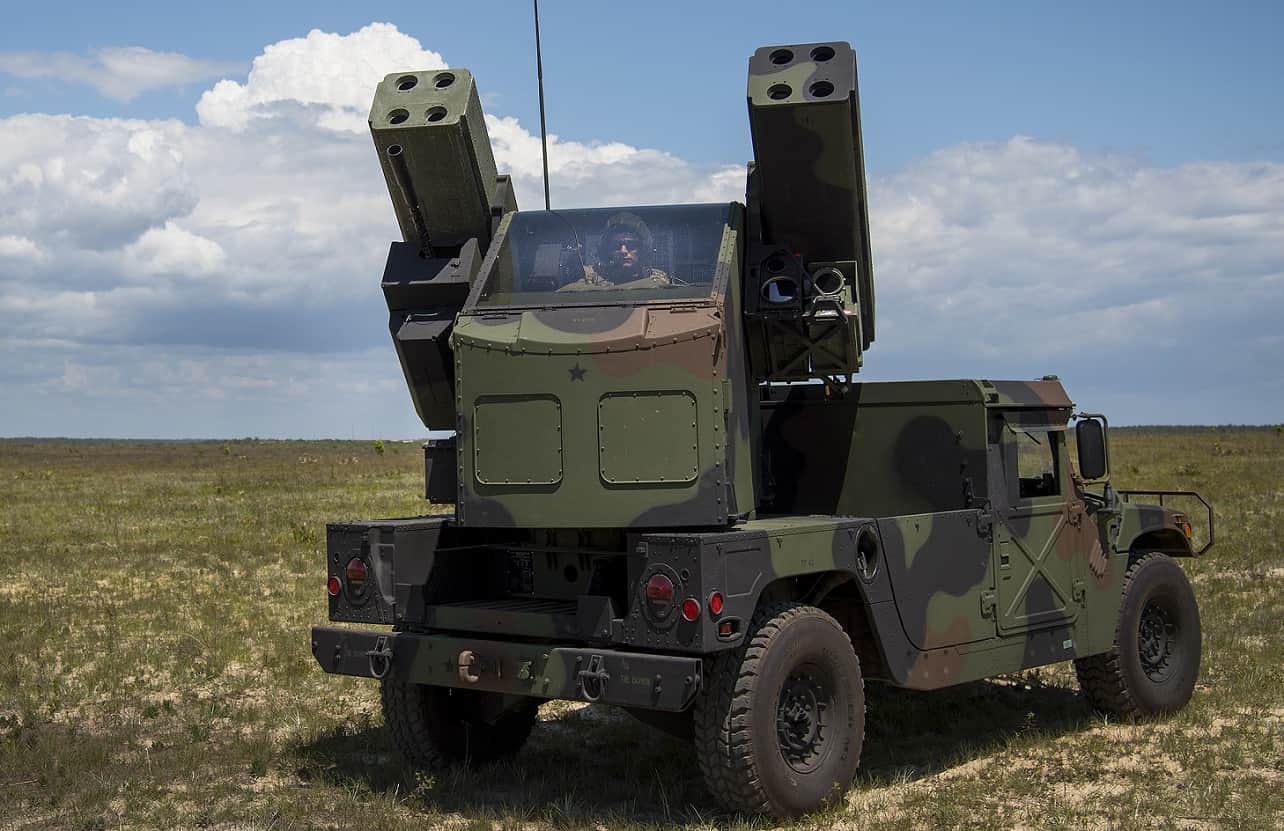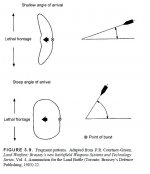Chris Pook said:
The 70mm rockets are produced in a number of countries, including Canada and Brazil.
Avibras claims that the unguided rocket in ground to ground ballistic mode, effectively area suppression, has a range of up to 12 km
This compares to the C1 105mm at 11 km and the C3 at 18 km.
The 70 mm ballistic rockets can be converted into Precision Guided Missiles that can be launched from the same launchers as the ballistic rockets. The converted rocket is known as the Advanced Precision Kill Weapons System II and is considered as a low cost alternative to the Hellfire ATGM. The range of the 70 mm APKWS II in Direct Fire mode is variously given as up to 5 km.
........
Here's a comparison of Payloads (ie effects).
81mm M821 - 0.68 kg Comp B
70mm M151 - 1.0 kg Comp B4
70mm M229 - 2.2 kg Comp B4
105mm M1 - 2.1 kg Comp B
120mm M933 - 2.99 kg Comp B
And just for reference the US Army's ACERM (Advanced Capability Enhanced Range Mortar) program is looking for a 20 km 81mm mortar. That seems to me to indicate that the Battalion's Area of Interest is getting a lot larger - in fact exceeding the current Brigade's and Artillery Regiment's Area.
The use of the 2.75" or 70mm surface to surface never caught on, and for a good reason. I think Norway was experimenting with it's use, but in a very limited way by special forces against precision targets. The weight of explosive material in the warhead is not the only measure of its terminal effects
Light rocket systems tend to be quite inaccurate, and do not have much of a payload. Sticking a guidance system on them uses up more payload, tends to reduce the effectiveness of the warhead, and the range is reduced. The thinner sides of the warhead on the rocket does result in a high charge to metal ratio, which would result in a higher velocity fragment compared to say the thicker sides of a typical 81mm HE bomb, problem is the diameter is still only 70mm. With such a small diameter you're going to be making fewer fragments and have a lower hit probability.
Another reason those type of rockets are not as effective for indirect fire, is their relatively shallow angle of fall onto the target, even at range. This shallow angle results in a more limited dispersion of fragments. This desire to get a steep angle of fall is why most gun systems have a variable charge system, so that a compromise can be achieved between balancing accuracy and the angle of fall.
These things combined is why the lethal radius of the M151 70mm rocket is somewhere around 10 metres, and somewhat better for the M229 but still less than an 81mm mortar bomb.
The sub munition versions of the rocket have to travel at a relatively slow velocity in order for them to work properly expelling their payload, which limits their range overall. This is especially true of the Illum variant (think the range is ~3km). In the area of smoke generation, they're relying on a form of phosphorus. WP would be a non starter for the CAF, not least because of the perception of its use. RP is notorious for its ineffectiveness, particularly if the weather conditions cause ignition problems (this has certainly been true with the 81mm variant). In any case they don't have much range, and the payload doesn't result in a very large area being covered
The low trajectory of the rocket also presents some problems of crest clearance, both along the trajectory and possibly at the target if it's in complex terrain
The 70mm rockets have proven effective when they're launched from the air, at relatively short range, in a barrage. Other nations using rockets surface to surface though, tend to go with much larger calibre to achieve the desired effects. The lack of accuracy being made up for by using sub munitions or a guidance system on a large unitary warhead (Canada did have the intent to buy HIMARS about a decade ago, with plan for the detachments to mostly come from the Reserves, but it was delayed so long the concept has pretty much been disregarded now)
All this is kind of missing the point of the essential need the C3 is fulfilling; training Reservists to a certain level that minimizes the workup time when they are employed within a Reg Force Regt. Right now, there is no sign of the M777 being replaced or augmented by anything else in those Reg Force Regt's. That the M777 is limited in the types of missions it can support, right now, is a much larger issue. Maybe improvements in ammunition and communication systems can ameliorate that situation, maybe there is a need to drastically improve support through broader indirect fire modernization, but it is extremely unlikely that'll happen anytime soon. In the meanwhile, how long can the C3 hold out?
The personnel shortages in the Reg Force Artillery Regt's are likely to continue for some time, these gaps officially are supposed to be filled by Primary Reservists. Those gaps exist primarily in the Gun Bty's, and came about by the increase of tasks and capabilities for the Arty Regt's, without an increase of Reg Force positions. The effectiveness, or lack, of the Primary Reserve structure to support this, is probably a much larger issue, and is discussed in a number of other threads. In the near term, the C3 is not in good health, it has an important domestic operational role to support avalanche control, but in general it provides a low cost method of providing training that fits within the limited resources (both time and money wise) allotted to Reservists. It does, to a degree, replicate many of the challenges of deploying towed guns that the M777 faces, something deploying something like mortar or gun trucks wouldn't. It would be highly desirable that something that replaced the C3 was also operationally deployable, but it's essential role is to support those two main tasks. My recommendation would be to re-barrel the C3s with perhaps the one used on the US M119, the M20A1 ordnance. It would help, too, if they attached a digitized gun laying system that works similar to the one on the M777 (it would help if they hung an APS on the 81's too, but I digress); occupation drills are considerably different for digitized guns compared to those with only optic sights, especially at night. It would be a lower cost solution to buy time until those much larger issues get sorted out



